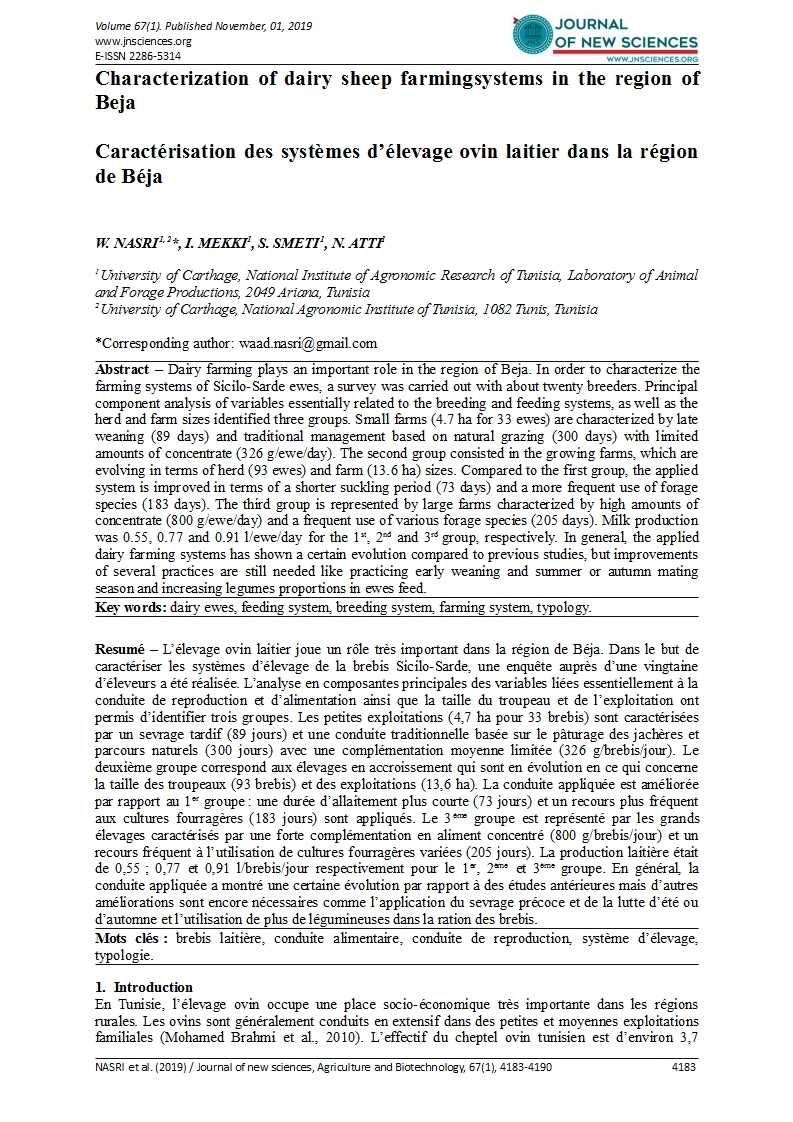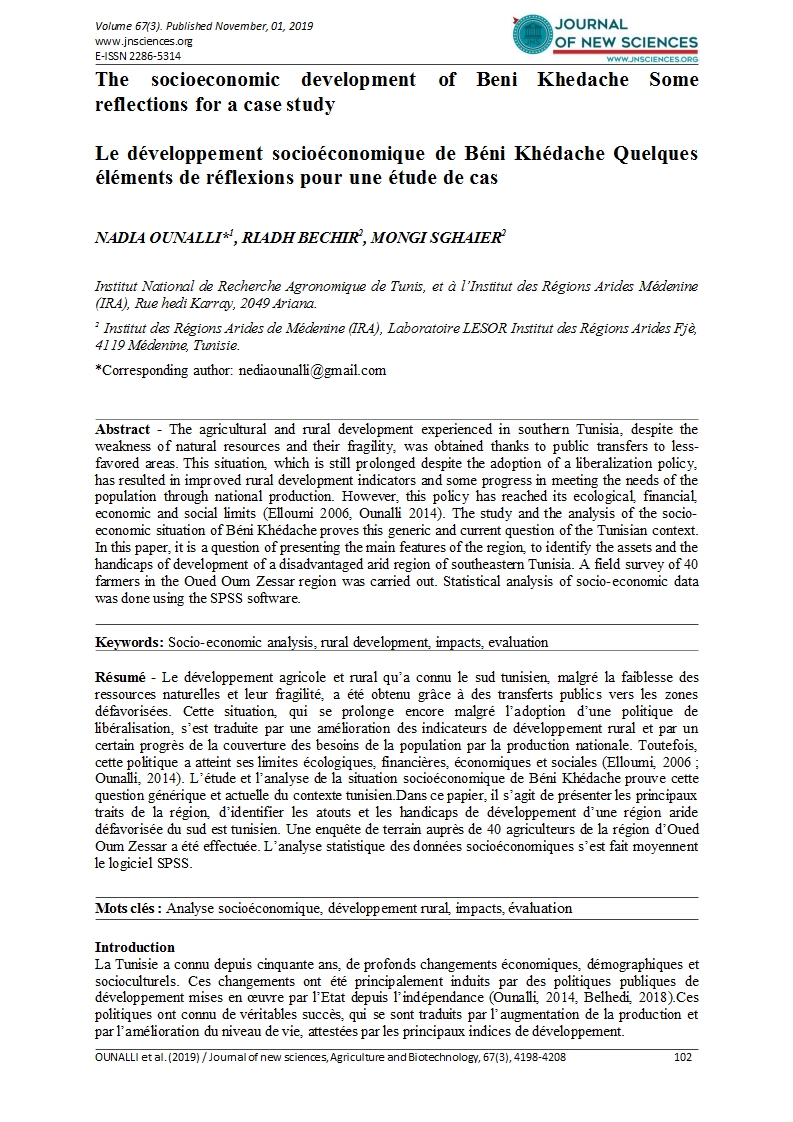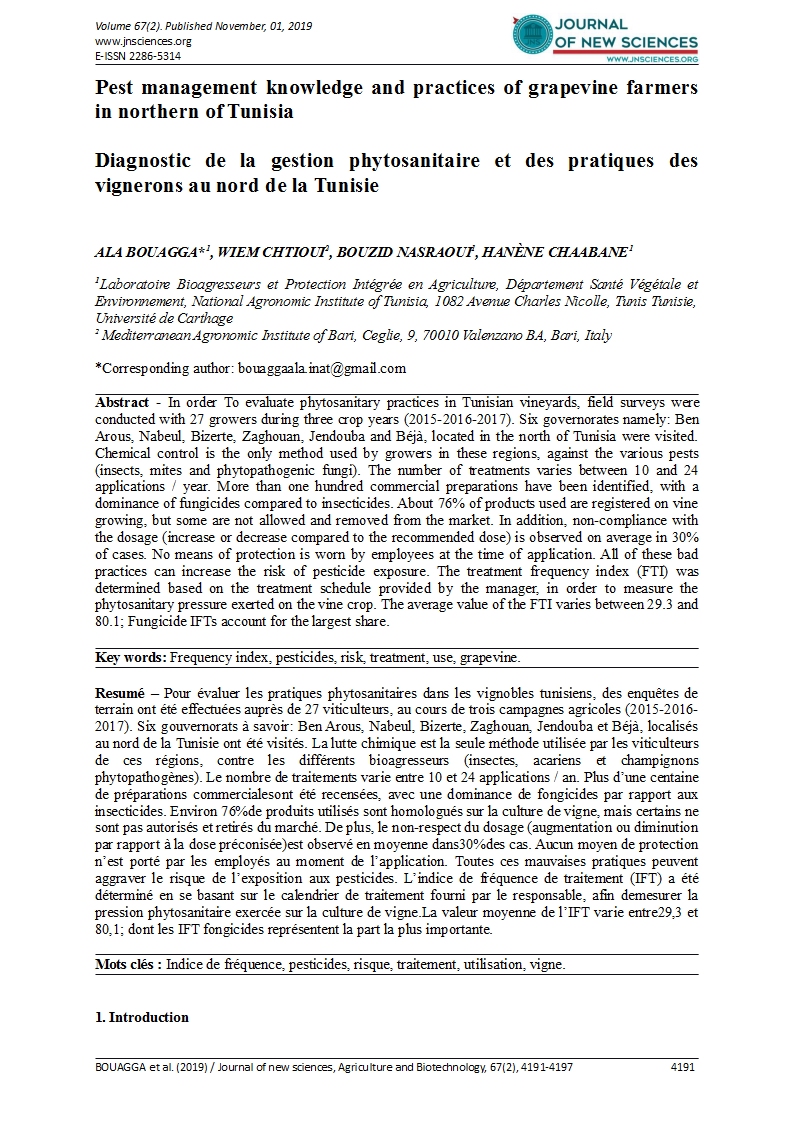- Category: Volume 67
- Hits: 3410
Characterization of dairy sheep farmingsystems in the region of Beja

Caractérisation des systèmes d’élevage ovin laitier dans la région de Béja
W. NASRI1, 2
I. MEKKI1
S. SMETI1
N. ATTI1
1University of Carthage, National Institute of Agronomic Research of Tunisia, Laboratory of Animal and Forage Productions, 2049 Ariana, Tunisia
2University of Carthage, National Agronomic Institute of Tunisia, 1082 Tunis, Tunisia
Abstract – Dairy farming plays an important role in the region of Beja. In order to characterize the farming systems of Sicilo-Sarde ewes, a survey was carried out with about twenty breeders. Principal component analysis of variables essentially related to the breeding and feeding systems, as well as the herd and farm sizes identified three groups. Small farms (4.7 ha for 33 ewes) are characterized by late weaning (89 days) and traditional management based on natural grazing (300 days) with limited amounts of concentrate (326 g/ewe/day). The second group consisted in the growing farms, which are evolving in terms of herd (93 ewes) and farm (13.6 ha) sizes. Compared to the first group, the applied system is improved in terms of a shorter suckling period (73 days) and a more frequent use of forage species (183 days). The third group is represented by large farms characterized by high amounts of concentrate (800 g/ewe/day) and a frequent use of various forage species (205 days). Milk production was 0.55, 0.77 and 0.91 l/ewe/day for the 1st, 2nd and 3rd group, respectively. In general, the applied dairy farming systems has shown a certain evolution compared to previous studies, but improvements of several practices are still needed like practicing early weaning and summer or autumn mating season and increasing legumes proportions in ewes feed.
Key words: dairy ewes, feeding system, breeding system, farming system, typology.


